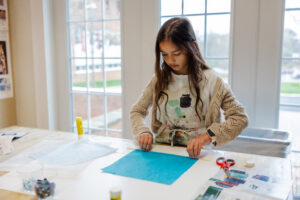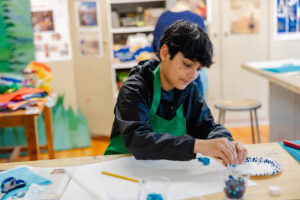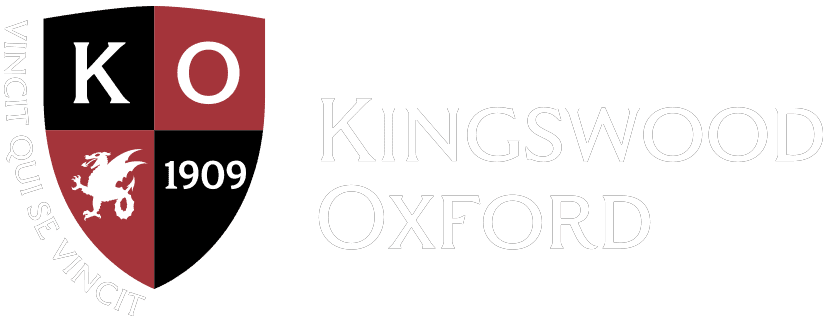October 21, 2024
Making Art: A Process of Self-Discovery
by Katherine Nicholson
Middle School Creative Arts Teacher
“You were right, Mrs. Nicholson. I did it. I CAN do that.”
Whether these comments come from a simple task, such as mixing a particular paint color, or a more complex process, such as making an art piece with a new technique, these are the words I love to hear from my art students. My ultimate goal when I step to the front of the class, no matter what artistic genre or creative challenge I present to my students, is to build students’ self-confidence and develop their voices.
Making art provides students with abundant opportunities to take risks, nourish creativity and practice resilience. In the art studio, I challenge students to seek out new experiences, explore their own interests and curiosity, and exceed their own expectations – in short, to find out who they are and who they want to become.
Studio as Sanctuary
It is my hope that my art studio is a welcoming refuge for students, a place where they can take a breather from the rigors of academics and discover their own creativity.
I want my studio to become a comfortable space where students can learn that you don’t have to be an artist to make art. Here students are free to break out of the box, to be messy, and to be themselves.

They that learn making art, just as with any other endeavor, takes time, effort and patience, and that art is not about a final product or being the best in the world, but about the satisfaction they experience through the process of creation.
Putting Their Heads Together
While my projects change often, because I like to keep it fresh for both me and my students, the skills and problems to solve are much the same from year to year. This year, I challenged my Form 2 Sculpture students to convert a pile of newspaper, a stack of cardboard, and a can of paint into a unique humanoid noggin the size of a beach ball.
Students were inspired by the likes of their role models, such as Kobe Bryant, and Albert Einstein, or just fun characters, such as Tik Tok stars and even Pinocchio.
After carefully studying the facial structure of the figure they’d selected, they assembled its underlying anatomy with pieces of cardboard. Then, like reconstructive plastic surgeons, they used tissue paper to shape the soft tissue of their subject’s visage, and then finished it with a paper mache skin. Finally, they painted the features, lines and shadows to express their own interpretation of the face.
When the process is complete, students literally become their own art as they put the sculpted noggins over their own heads to become, in essence, their own creations.
This project allows students to explore and observe artistic elements, such as form, structure, texture, line, contrast and balance, as they rely on their instincts, collaboration, intuition and ingenuity to produce something entirely original.
A Brush With Greatness
This year, the same creative processes are at work as my seventh-graders sculpt clay and apply paint to convert ordinary paint brushes into a wonderful gallery of characters ranging from Bart Simpson to Shrek. As with the big heads project, students master the skill of molding facial features and learn how to paint three-dimensional objects.
Mastering these skills is no easy feat, and it takes perseverance, grit and determination to retrain your eye to see the details of faces as well as their structures. Students learn not to think in terms of stereotypes or shortcuts, but to really observe, to see, and then to translate these perceptions to their work.
This project not only allows for the whimsical – the paintbrush can become anything from a gnome’s beard to the fly-away hair of a troll – but also shows students that they can be frustrated with techniques and results at times, but that with engagement, perseverance and grit, they can reach the other side of that frustration and be proud of what they have made.
Discovering Themselves
As I observe my students creating art, I watch them becoming themselves: individuals who will experience the satisfaction of saying, as they approach many different endeavors, “I can do that,” and better yet, “I like doing this, and I think that I might be good at it.”
Thinkers
Blog Main News
